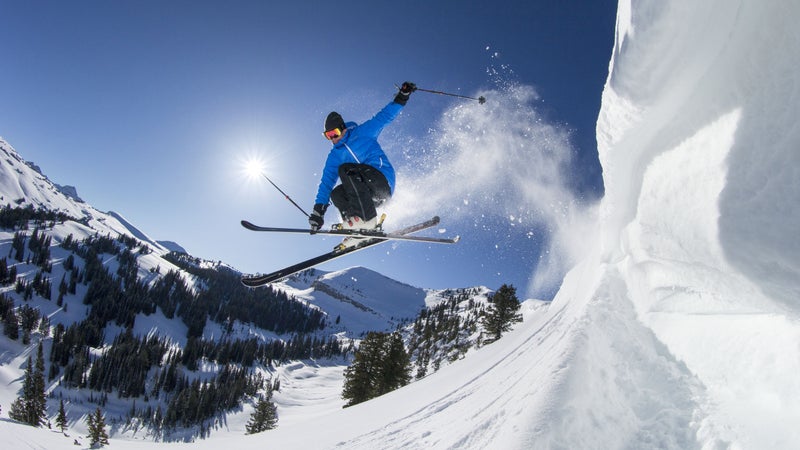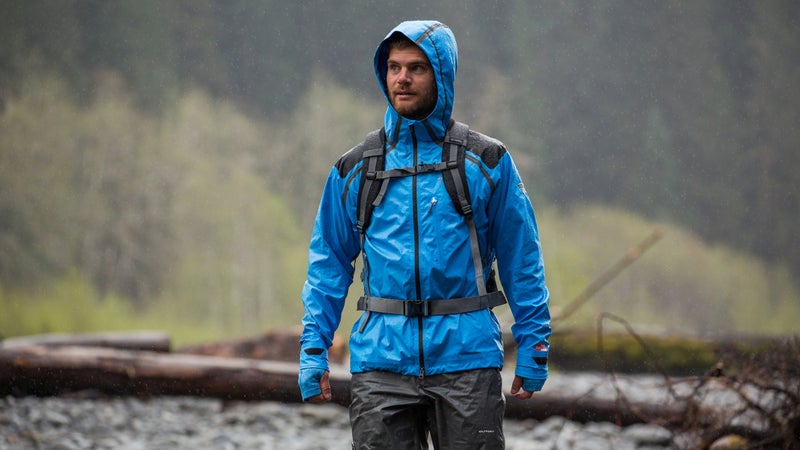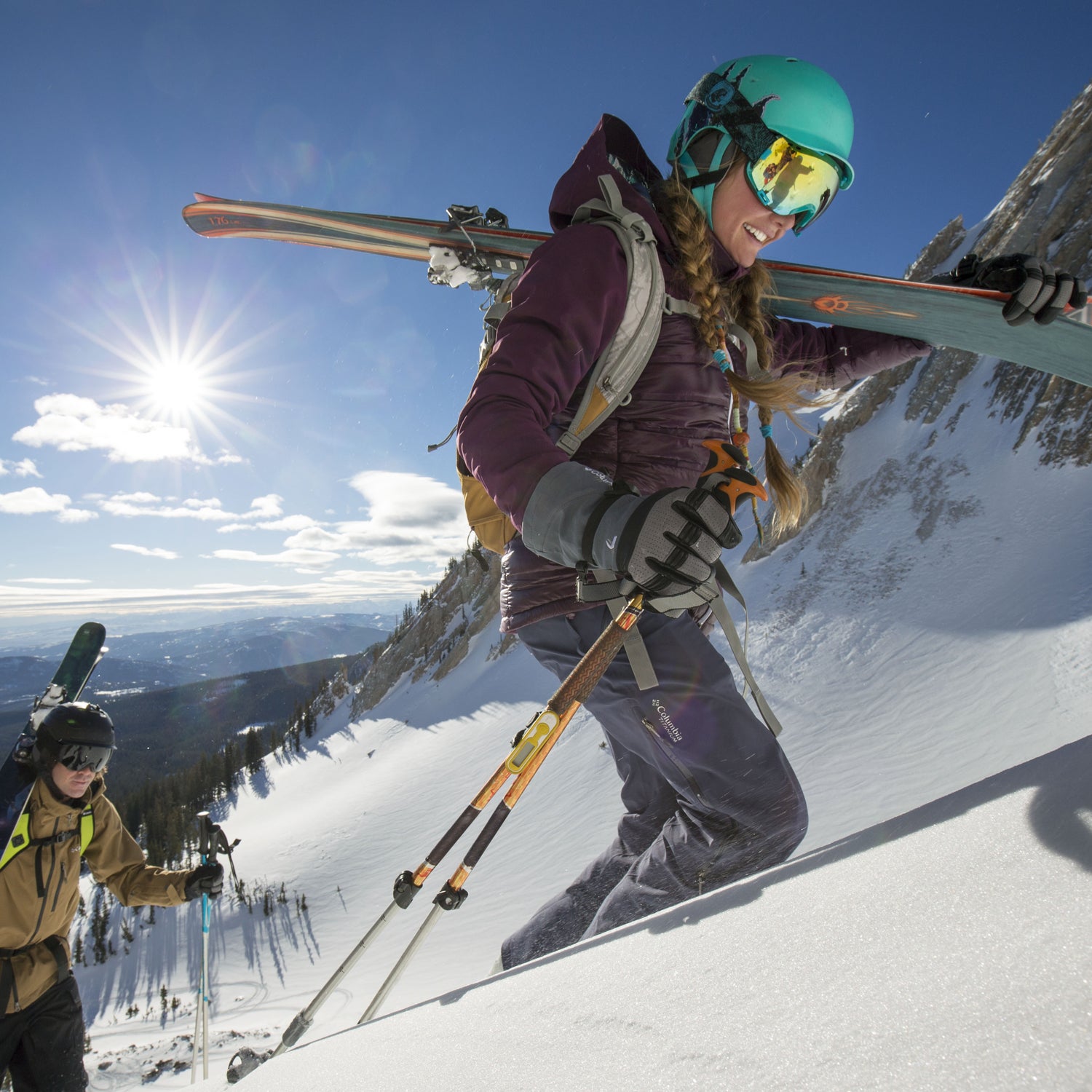Columbia Sportswear is probably best known for its board chairwoman Gert Boyle, whose stern visage and tagline “One Tough Mother” was for years featured in the company’s ads portraying Columbia as a quality, no-nonsense brand that offered good value. (Her reputation only increased in 2010 when the then-86-year-old at her Oregon home despite having her hands bound.)
The company is also known for its inexpensive jackets. With more than $2 billion in annual sales, Columbia is one of the outdoor industry’s largest apparel makers. Its biggest seller? Raincoats under $100. According to the company, it sells more low-cost raincoats than any other brand in the industry. Their traditional customer doesn’t shop at the high end. In 2013, company president Tim Boyle (Gert’s son) that Columbia’s core customer is “a 35-year-old family person—a mom or dad who likes taking the kids outside for hiking and camping.”
Yet the company has recently distinguished itself with a host of impressive technological innovations developed in its highly secretive, performance-driven lab in Beaverton, Oregon. Last winter, it debuted the , which we called possibly the warmest down parka for its weight ever invented. Four months ago, the company unveiled the supremely durable and breathable , which flips traditional waterproof-breathable construction on its head. Each are priced above $400, a big price point jump for Columbia. “Their new top-end stuff is on par with anyone’s,” says Mike Donohue, owner of the in Burlington, Vermont.

So what gives? Why would a company founded on good-value principles pursue the high-performance, high-cost market?
Over the past decade, Columbia has made a host of moves to diversify its offerings. It has purchased several brands, including technical goods maker Mountain Hardwear and lifestyle apparel company Prana, and it spun winter boot maker Sorel into a fashion-forward brand. Collectively, its offerings now run the gamut from utilitarian outerwear to boutique fashion pieces. Having recently passed $2 billion in sales, Columbia now is also large enough to reap the financial rewards of investing in its own proprietary technologies, says Eric Lyon, president of outdoor industry consulting firm Sid Factor. “It’s also good marketing, a way to raise your brand’s prestige,” he says.
The technical push began in 2008, when Woody Blackford, Columbia’s vice president of apparel innovation and design, introduced the company’s now-signature , a sheet of metallic microdots printed inside winter apparel that directs heat back to the body. It was the first major innovation to come out of the Performance Innovation Team (PIT) lab organized the year before in the company’s headquarters in Beaverton, Oregon. Similar in purpose to Nike’s famous innovation kitchen, Columbia’s ten-person team has secured more than 200 patents while creating technologies that can funnel into each of the brands in the company’s portfolio, including Mountain Hardwear and Montrail. In 2013, for example, the PIT lab developed a fabric embedded with chemical rings that lower a wearer’s temperature when activated by sweat. “Columbia sells a lot of products with the rings, but Mountain Hardwear has really run with it,” says Columbia spokesman Andy Nordhoff.
In 2010, Columbia also acquired Italian company OutDry, which had developed a way to bond a waterproof-breathable membrane directly to the inside of the outermost layer of a shoe or glove. Subsequently, in conjunction with the PIT lab, the company expanded the technique into apparel, such as the new raincoats. “The OutDry acquisition makes good sense,” says Lyon. “It was underutilized, and between all of Columbia’s brands, they have enough product to sell it in that they’ll recoup their investment fairly quickly.”

In addition, says Blackford, using proprietary technologies saves money over buying them from third parties like Gore. (In 1991, Columbia was the largest purveyor of Gore-Tex, but shortly thereafter Tim Boyle decided to develop his own waterproof-breathable membrane instead.)
More important, it raises the brand’s profile with consumers. Says Blackford, “Each investment in technology is an investment in the brand. We want people to think of Columbia as a innovations leader, which strengthens brand perception.” The technology rollouts typically occur in Columbia’s higher-priced items but eventually trickle down to lower-priced items across the line. It’s a similar strategy to the one car companies have used for years: General Motors debuts its newer technologies in expensive lines like Corvette and Cadillac years before they appear in more widely sold, less-expensive brands like Chevrolet.
The strategy is working, according to Blaine Perrin, Columbia’s director of product marketing. The company’s research shows that consumers’ associations of Columbia with terms like “technical” and “innovative” have doubled over the past four years, correlating to the innovation push driven by the PIT lab. That’s roughly the same rate of association with terms like “value” and “accessibility,” which means, says Perrin, that the brand “is maintaining its core values while adding new ones.” And that marketing message matters. “For brands, the most effective technologies are the best communicated technologies,” says Lyon.
Ironically, he notes, offering higher-priced, more-technical pieces tends to boost sales in lower-priced offerings. “People like to know the top-end stuff is available but then end up buying at a lower price point,” he says. To accommodate that urge, Columbia will be selling the OutDry raingear at three price tiers in 2016, ranging from $120 to $400.


